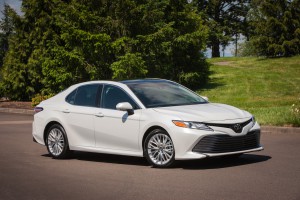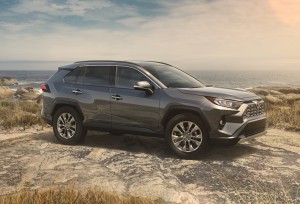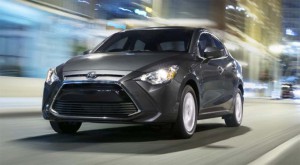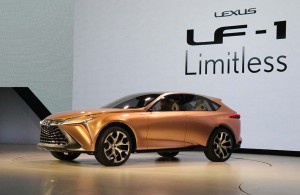With the exception of the Mustang, Ford is winding down production of passenger cars. Fiat Chrysler has eliminated almost all of its sedans and coupes, as well. In an era when SUVs have come to rule the roads, could Toyota be far behind?
While we’re not likely to see the Camry or Corolla nameplates vanish anytime soon, the Japanese giant is also rethinking its model mix and could toss some of its sedans, coupes and hatchbacks as it puts more of an emphasis on sport and crossover-utility vehicles, according to the head of its North American operations.
“We are taking a hard look at all the segments we compete in, to make sure we are competing in profitable segments and that products that we sell have strategic value to the brand,” Jim Lentz told the Wall Street Journal.
(Toyota earnings surge despite weak U.S. sales. Click Here for the breaking news.)
The numbers paint a grim picture for some of Toyota’s passenger car models. Demand for the little Yaris was off 38.2% in the U.S. for the first 10 months of this year, and stumbled an even more troubling 51.4% in October. The Toyota 86 sports car generated a mere 335 sales last month, a 40.6% year-over-year drop, and was down 29.7 % through the end of October.
Even three of Toyota’s traditionally strongest passenger car models are having a hard time. The long-popular Corolla fell 11.6% during the calendar-year-to-date, and 14.2% in October alone. The Prius hybrid family fell 17.7% for the first 10 months and 21.4% in October, while Camry, long the country’s best-selling passenger car, was off 6.5% through the end of October, while down 1.4% last month
Those numbers actually might understate the problems facing the largest of the Japanese brands, as Toyota had been beefing up incentives for much of the year to try to prop up demand for models like Camry and Corolla.
A look at the other side of the ledger underscores the need for taking that hard look at the line-up. While sales of the automaker’s passenger car models are off 11.4% for the first 10 months of the year – including both Toyota and Lexus brands – light truck demand spiked 7.3% in an otherwise weak U.S. market. Through the end of October, the big Highlander was up 14.1%, the compact RAV4 gaining 1.6 percent. And the Lexus RX saw sales jump 4.2 percent.
There were a few weak performers on the truck side, the Toyota Sequoia off 10.3% through the end of October, but the differences between the two categories are starkly apparent.
And, if anything, the gap has been growing, something that Lentz could address in the coming months by trimming back one or more of the company’s weaker models. The Yaris is perhaps the most endangered of the offerings, though Toyota might also have to rethink its commitment to the full Prius “family,” which now includes four different hybrid models.
(It’s official. Click Here to find out when and where the reborn Toyota Supra will debut.)
What you won’t see is a wholesale transition from cars to trucks. While the RAV4 may now be Toyota’s best-selling model, the Camry remains a close second, American motorists purchasing 289,801 of the sedans through the end of October.
“I think it’s a mistake to pull out of the passenger-car business,” Lentz told the Journal.
If anything, Toyota appears to be hoping it will be able to pick up some of the business that Ford and other rivals are giving up as they pull back on their passenger car lines.
Still, you can expect to see Toyota look for more white space to enter in the truck market, particularly in the form of new SUVs. It gave a hint of one possible new entry during the North American International Auto Show last January, rolling out the Lexus LF-1 Limitless. Though a concept vehicle – for now – it is widely believed to set the stage for a new brand flagship, the crossover counterpart to the current Lexus LS sedan.
Still more new utes for both the Lexus and Toyota line-ups are believed to be in the works, including a potential replacement for the old FJ Cruiser model.
despite a slowdown in the overall Chinese market.
Sales gains were only one of the factors that propped up Toyota’s bottom line, said Senior Managing Masayoshi Shirayanagi. Referring to aggressive cost-cutting efforts, he said, “We are steadily making progress toward achieving our challenge-level target.”
(Toyota joins in the fun at SEMA with some hot concepts. Click Here to check out what it and other automakers brought to the party.)





“Pare back” not “pair back”.
Already corrected…